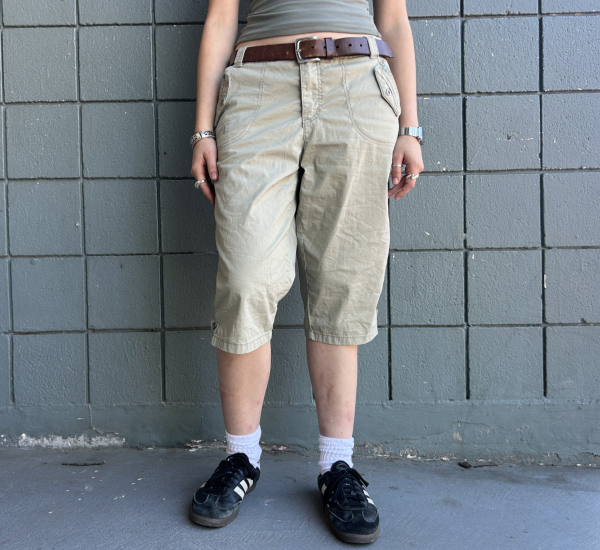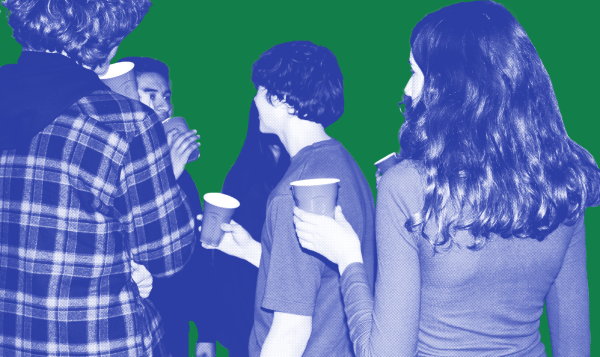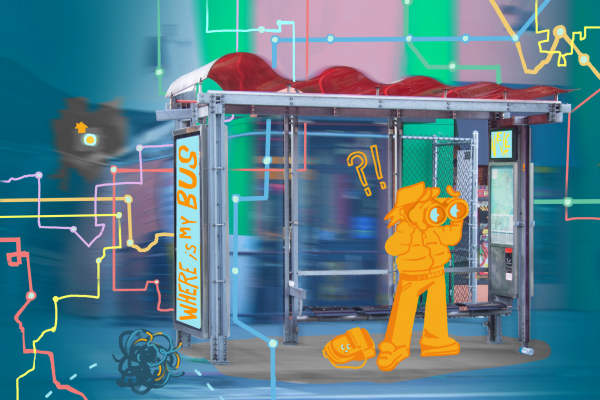Conscious couture: How Lowell students can make a difference with what they wear
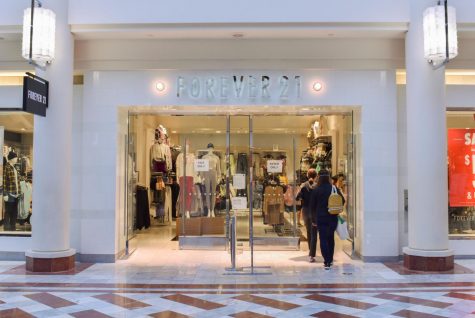
It’s the summer of 2019 and senior Leslie Vallejo-Avila is out with friends. As they turn onto Haight and Ashbury, she enters the world of thrift shopping for the first time. They cruise down the aisles of Goodwill, Wasteland, and Buffalo Exchange, and she’s amazed at the prices and variety before her: Champion crewnecks for $25 dollars, Adidas hoodies for $15. It was then that she knew she would not be returning to the corporate clothing stores she once remained loyal to.
Vallejo-Avila is one of many students who developed new shopping habits for financial and ethical reasons. As social, environmental, and moral awareness rises amongst teenagers, catalyzed by a growing cultural shift towards more conscious consumerism, many have found themselves reflecting on the multitude of ways they contribute to these issues, including their fashion choices. While leaving a store with bags on each arm may seem harmless, where people purchase their clothing can potentially feed the demand for exploitation, further gentrify crucial resources, or contribute to global climate change. Curating a trendy outfit is not always victimless, but ethics aren’t the only thing crossing a high schooler’s mind when they open their closet. Young people seek self-expression, whether they choose conformity or rebellion in what they wear. So how does one strike a balance between morally responsible and runway ready?
Fast fashion, or the rapid production of clothing by mass-market retailers, is a widely popular form of shopping that has prospered for generations. It has been able to do so because fast fashion is, as its name implies, fast: it keeps up with trends, and in a way that is inexpensive and accessible to young people with its quick and efficient production. Fast fashion stores are easy to find all over the country, and one can pick out an in-style piece the second they walk through the door — they are sure to be stocked with new arrivals every few weeks.
In addition to being convenient, fast fashion stores often gain popularity that strengthens their appeal. When Junior Isabella Jones was in middle school, she filled her wardrobe with clothes from stores like Brandy Melville, a popular “one-size fits all” brand that caters to teenage girls. “You see someone wearing something, and you’re like, ‘Oh that’s so cute, I want that too!’” Jones said. “And you then can get it yourself.” Many also shopped fast fashion simply to fit in and “wear what the popular kids were wearing,” senior Felicia Su said.
But there is a dark side to these brands; fast fashion companies have become widely condemned in part due to their poor factory working conditions. The quick-moving nature of these companies keeps customers returning for more in an indefinite cycle to catch up on ever-changing trends, and because of the short life span of the clothing due to its poor quality. This cycle raises demand and consequently raises production. While working to produce extremely large quantities of clothes quickly, employees face tough factory circumstances. Consumption of rapidly produced clothing pushes hundreds of millions of workers into sweatshops, where they are underpaid and the conditions they meet can be dangerous, including reports of sexual abuse, lack of safety equipment, and long work hours for unlivable wages — retailers like H&M and Gap are known for these types of malpractice. Companies keep hiring them to meet continued consumer demands. It’s because of these practices that Vallejo-Avila has stopped supporting fast fashion. “What people don’t know is that there’s a huge price to fast fashion. Even though consumers don’t pay it, the people creating the clothing do,” she said.

In addition to harming workers, the production many fast fashion brands undergo have detrimental impacts on the environment with overproduction and resource consumption. According to Joanne Brasch, the Special Projects Manager of The California Stewardship Council, textile fabrics use extreme amounts of resources, and greenhouse gases are released throughout the production of the clothes. A pair of jeans uses 20,000 liters of water and contaminates waterways with toxic dyes. Additionally, millions of tons of plastic are used for textile fabrics alone. When a piece is not bought, most producers simply throw it away instead of donating it. In 2018, more than 19 billion pounds of clothing in the U.S. were landfilled, and nearly another 5 billion pounds were incinerated, according to a report by the Environmental Protection Agency. Fast fashion’s in-vogue styles and unbeatable prices put a bow on the horrors of waste, consumption, and pollution, but not everyone is willing to turn a blind eye.
Today, Jones and many others are finding alternatives to fast fashion: thrift stores, businesses that resell donated pre-owned items, and other avenues of secondhand shopping. Buying something used instead of new eliminates the demand for raw material, unethical labor, and keeps unwanted clothes out of the landfill. Adding to the appeal, because most are donation-based operations, thrift stores can provide a unique variety of styles ranging from vintage pieces to last season’s recycled fast fashion for generally affordable prices, and many find joy in searching for these treasures. Online sources of secondhand clothes also exist and make shopping for them even more accessible. The attraction to these features is contributing to a cultural shift in shopping that can massively mitigate the effects of the fashion industry’s environmental degradation. “Before you buy something, try looking for it on Depop or any app that resells clothes. Not only are you repurposing someone else’s trash that they don’t want anymore, it’s less clothing waste,” Vallejo-Avila said. And as conscience on social-environmental responsibility evolves, so does consumer taste. The conformity that is so prevalent with stores like Brandy Melville is being outgrown by many high schoolers, who are realizing that the individualism found in secondhand stores can create a new sense of freedom. “As I’ve grown up I’ve found that it’s more fun to be unique and own pieces that no one else has,” Jones said.
However, like any option, thrifting is not without its flaws. Second-hand stores like Goodwill and Salvation Army have historically been crucial resources for low-income families and individuals looking for affordable clothes, household items, and other goods. But that audience is changing, and with that comes changes in prices, product availability, and atmosphere. In some areas of the city, specifically the Mission District, the used clothing industry is growing more and more gentrified. Senior Ivy Zip has noticed this increase in prices, specifically in the stores her mom could only afford to buy toys and clothes from when she was a child. “If people who can afford ‘regular clothes’ go to those stores, it can drive the prices up and hurt a lot of people,” she said.
Instead, Zip believes that for those who have enough money, shopping secondhand on online platforms like Depop and Poshmark is the best option for making sustainable shopping choices while avoiding driving up gentrification in thrift stores that low-income locals depend on. Online second-hand stores pose another solution to one of thrifting’s biggest shortcomings: waste. According to Brasch, because thrift stores need to get rid of their unsold items in a timely manner that fits their donation-based budgets, there is very limited sorting of the clothing that gets sent out of the United States, and a lot of unusable clothes are mixed in. Consequently, a majority of these pieces end up in the landfills of other countries. “We’re basically dumping our trash in other countries,” Brasch said. Knowing this, Pon likes online secondhand shopping because those resellers purchase so many thrifted items from that abundant surplus of donated items and help keep them from landfills.
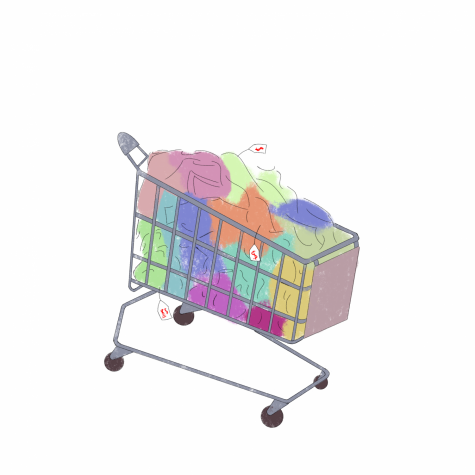
Sustainable fashion doesn’t end with secondhand. While not popular amongst teenagers yet, brand-new, environmentally and morally friendly clothing pieces are on the rise. Many small brands have developed lines of sustainable clothing typically sold at higher prices, and even some fast fashion brands are finding ways to reduce their negative impact on the environment by implementing commitments like changing their materials, adding trade-in programs to resell or recycle used clothes, and pledging to carbon neutrality and fair wages. Brasch explained that having these less-damaging options can be very helpful for posing an alternative to those who typically shop fast fashion. “There will always be people who don’t want to buy worn clothing. It’s best to have options for those people that also doesn’t hurt the environment in the ways that a lot of new clothing does,” she said. Buying from these more conscious brands can also play a key role in transitioning underpaid garment workers into supporting their livelihoods because their higher prices can support higher wages. However, finding companies that produce their clothing ethically, pay their workers fairly, and use less environmentally damaging materials can be time-consuming. Clothes from companies like these are also often too expensive for many. “I’m a teenager, I don’t have a source of income,” Jones said. “Of course the clothes are cute and I love what they stand for, but for me it’s a lot easier and less expensive to shop at other places.”
No matter what store you walk into, there are always steps one can take to better their impact on the environment and contribute to the potential systemic change in the fashion industry. According to Brasch, buying clothes with longer wearability and limiting the rate at which you consume newly made clothing is one, as the rapid turnover of trending styles feed overproduction. “I think that’s another part,” sophomore Tara Tiong said. “It’s not just about buying clothes that are good for the environment, it’s also about buying items you can use for a long time.” Chuang, who hasn’t bought new clothes since a year ago, echoed these values. She realized, “I’m either going to stop buying stuff because it is a waste of money and resources, or I’m just going to go on like this and keep wasting stuff,” she said.
Another important factor in tracking one’s fashion-forward environmental impact is disposing of old clothes responsibly. Donating to large second-hand sellers like Goodwill or ThredUp gives your old clothes a chance to be repurposed by others. However, by donating, you may still be contributing to international landfills if your donations are not purchased after a certain time. “Selling is a better option because when you sell it you know that someone else actually wants it and will actually wear it,” Chuang said. Online marketplaces like Facebook Marketplace and Mercari that offer an opportunity for individuals to directly buy and sell pre-owned items are becoming more and more prevalent.
Lowell’s Eco Club has also taken their part in encouraging a culture of conscious shopping through their annual Eco Swap events. The clothing swaps are open for Lowell students to drop off unwanted clothes and find new ones through donations from their peers. Because of COVID-19, Lowell’s Eco Club planned a socially distanced swap this year. Members, including Eco Club Public Relations Isabel Pon, hosted bins at different locations in San Francisco for clothing drop-offs and pickups, where they set them outside their homes every morning and took them in for the evening to post photos of each item on the Eco Swap Instagram. Then, Pon watched for notifications, answering direct messages every day to arrange times for people to claim items they were interested in. This system allowed students to find unique pieces straight from their community completely free of charge. “Seeing how much participation there has been, seeing how many people have been excited about finding items and also donating them,” Pon said. It’s [been] encouraging to continue finding good clothing through secondhand [sources] knowing that a lot of other people are also excited.”
While certain choices we make as consumers can be harmful to the environment and the workers producing what we consume, many like Vallejo-Avila point out the importance of considering that some don’t have many alternatives. Vallejo-Avila believes that because “we’re all in a system of capitalism,” at the end of the day it’s hard for people to “work their way around it” and be perfect in their choices.
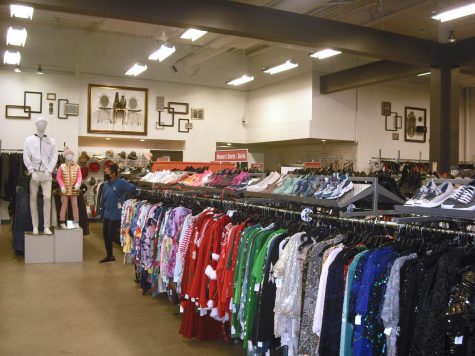
Knowing the consequences of your shopping choices is the first step towards reform in the fashion industry. Anyone can learn about the effects of fashion consumption and finding a balance between sustainable fashion, mass-market corporations, and secondhand stores. For Vallejo-Avila, it was fascinating to learn that thrifting provided her with an opportunity to add fast brand pieces to her wardrobe, while simultaneously avoiding contributing to the demand for the harmful effects of high-speed production. As she learned more about the ways she contributed to a healthier planet by adjusting her consumer choices, she made thrifting a permanent routine and went on to urge many others to do the same. Through research and adjusting consumption, people can find shopping habits fit for their wallet, style identity, and moral compass.




